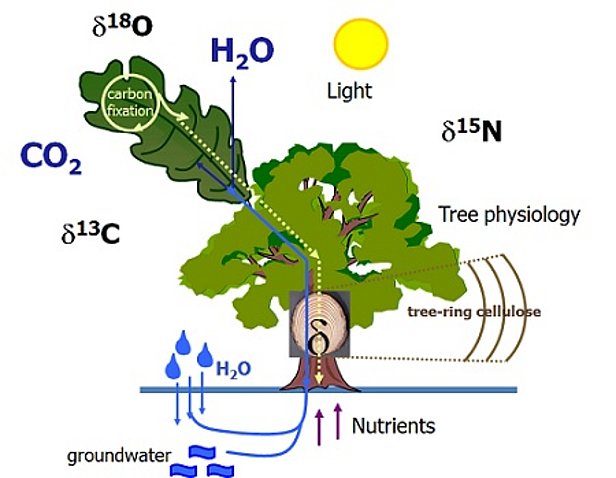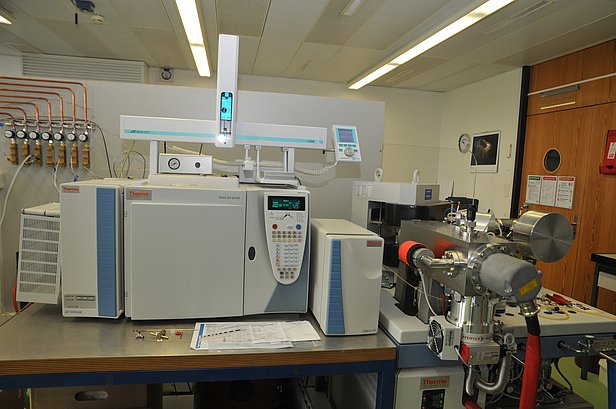Contents ¶

We use stable isotope ratios of the light elements hydrogen, carbon, nitrogen and oxygen as universal tool for studying physical, chemical and biological processes in forests and other ecosystems. Due to natural isotope fractionations, environmental changes leave unique fingerprints in organic matter, like tree rings. It is therefore possible to detect the influence of ongoing climate changes on plant physiology. By applying isotopically labelled substrate, matter fluxes through plants and soil can be traced and better understood.
We have isotope-Ratio mass-spectrometers and dedicated periphery for the analysis of organic matter, gas samples and water samples. With HPLC and GC we apply compound-specific isotope ratio analysis of sugars and organic acids.
Additional isotope mass-spectrometers are operated by the Zentrallabor WSL.

New instrument: Laser-Ablation Isotope Ratio Mass-Spectrometer (LA-IRMS) ¶
This instrument enables high-resolution isotope analysis of organic matter like tree rings and is able to provide the necessary temporal information for better understanding the linkage between climate drivers, plant internal processes and tree growth.
The LA-IRMS set-up consists of a UV-laser for ablating small pieces of a wood samples, a Cryoflex for collection of produced CO2 with liquid nitrogen traps and an Isotope-ratio mass-spectrometer to measure stable carbon isotope ratio d13C. The laser shoots on a sample which is in a sealed chamber. The chamber is mounted on a 3D-movable table for precise positioning. The resulting organic dust from the laser ablation is transported with helium through an oven for combustion to CO2. To have enough material, a spot size of 100µm (0.1 mm) is optimal. The laser ablation of this amount of material is sufficient for a reliable analysis. However, higher spatial resolution down to 30 µm is possible when material from several shots are combined.
XiBox – Experimental facility for future forest research ¶
To study how trees respond to the future climate, we have set up a new experimental facility, the XiBox – Experimental Box for high-resolution plant gas-exchange and isotope research under extreme conditions.
The XiBox is currently housed in a wooden, sound-insulated box and is probably unique in the world in its construction and composition. The box is equipped with electrics, water, internet, measurement and calibration gases, air conditioning and an automated valve switching system. Inside the box, a new climate chamber of about 2 square metres enables to grow and treat trees or other plants under very controlled temperature (up to 42°C), humidity, and light conditions, enabling to simulate dry summers and heat waves of the future.
Using state-of-the-art gas exchange equipment, we can study plant physiological processes, such as photosynthesis and transpiration, online and at high resolution. At the same time, two isotope laser spectrometers enable high-resolution analyses of carbon, oxygen and hydrogen isotope ratios of H2O and CO2, which provide even deeper insights into plant functions and enables tracer experiments.
The multifunctional XiBox is located at the large-scale laboratory at WSL Birmensdorf, expanding the infrastructure of WSL for novel forest research.


